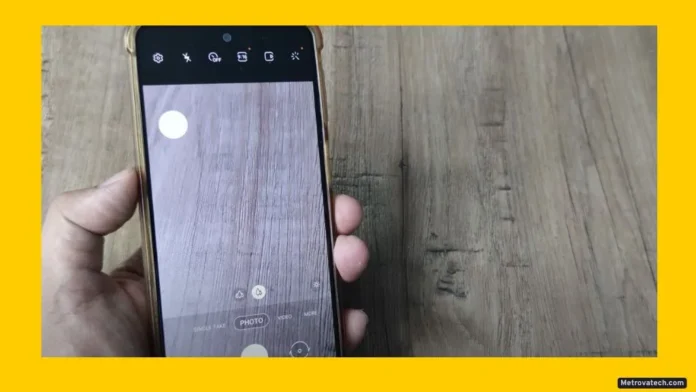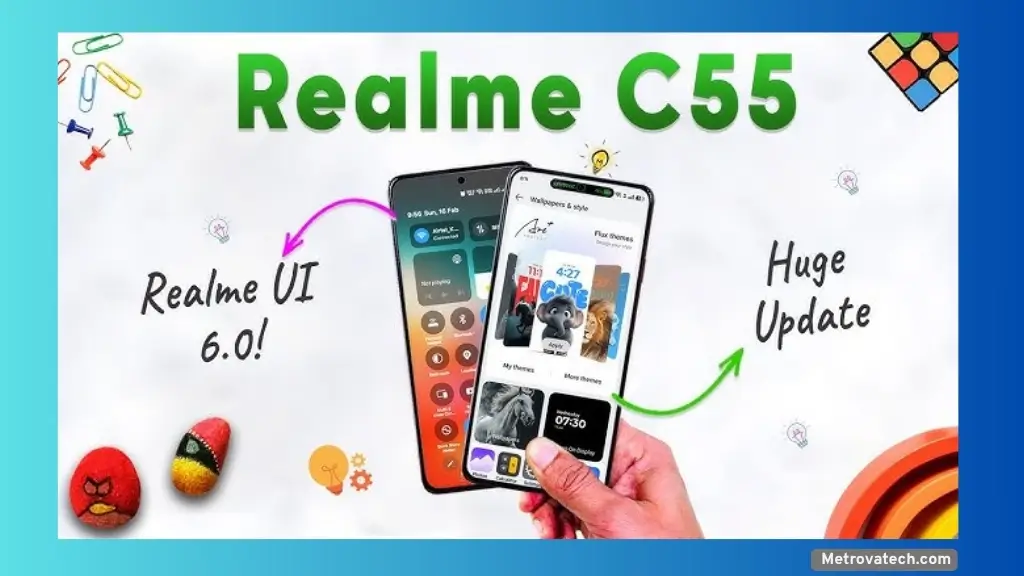If you use a Samsung phone, nothing feels more annoying than that dreaded “Camera Failed” or “Flash Not Working” warning. It can happen at the worst possible time, right when you want to capture a special moment! Whether you own a Samsung A32, another Samsung model, an iPhone, or even an Android or Nikon camera, flash problems can pop up for all kinds of reasons. I’m walking you through the exact steps I take when the flash isn’t working, making sure you get your phone’s camera—along with its flash—back to taking great pictures.
You’ll find everything here: why your flash might not work, what settings you need to change, how to clear weird glitches, and all the little checks that can solve that “camera flash not working” headache. I’m focusing on Samsung, especially the A32, but many of these tricks also solve flash problems on Android, iPhone, and even some cameras like Nikon. Let’s fix that flash and get you snapping pictures again.
Understanding the “Camera Failed” or “Flash Not Working” Problem
If you’ve seen the Camera Failed or Warning: Camera Failed message on your Samsung phone, you know how frustrating it feels. On older Samsung phones, newer models like the Galaxy A32, and even different brands, the issues often look the same:
- The camera app refuses to open.
- The flash doesn’t fire when it should.
- You see error messages or, sometimes, the phone freezes.
Why does this happen? Here are the most common reasons:
- Third-party camera apps (like beauty or filter apps) create software conflicts or introduce hidden malware and viruses. These apps sometimes hijack camera controls, breaking the flash.
- Overloaded camera cache or data can make the camera app slow or unresponsive. If you’ve never cleared out old data, the app can get “stuck,” refusing to work properly.
- Wrong permissions in your settings deny the camera app the access it needs—for the camera, flash, microphone, and storage.
If you’re searching for “How to fix flash not working with camera Samsung A32” or “Why my camera flash is not working Samsung,” this is exactly what you’re dealing with.
Step 1: Open Your Settings and Find Your Apps
The first thing I do is jump into my phone’s Settings. Every phone lays things out a bit differently, but here’s a basic roadmap:
- Go to the home screen.
- Tap the gear-shaped Settings icon.
- Scroll down until you see Apps, App Management, or App Info.
- Open this option to get the full list of apps installed on your phone.
The wording might differ slightly based on your Samsung model (like A32, A21s, or S21), but you’ll always find a way to see all apps from Settings.
Step 2: Remove Third-Party Camera Apps and Duplicates
If you’ve ever downloaded extra camera apps that promise better filters or unique features, they might be behind your flash problems. Apps with names like BeautyPlus, HD Camera, or others that don’t come built-in to your Samsung device can take over camera permissions or cause software clashes, especially with the flash.
Common problematic camera apps:
- BeautyPlus
- HD Camera (not from Samsung)
- Any camera app with extra filters or editing features
- “Selfie” camera apps downloaded from the Play Store
To remove these:
- Find each suspicious or duplicate camera app in your Apps list.
- Tap on it.
- Choose Uninstall or Delete.
Warning: Don’t uninstall system apps or the official Samsung Camera app. Only remove camera apps you downloaded yourself or that look unfamiliar.
Step 3: Clear Cache and Data of the Original Camera App
Once you’ve cleaned up old camera apps, focus on your default Samsung Camera app. Clearing out built-up junk data and cache can work wonders.
Here’s what I do, step by step:
- In your Apps list, find the default Camera app (the one that shipped with your phone).
- Tap to open its settings.
You’ll see several options:
- Open
- Force Stop
- Disable
- Manage Notifications
- Permissions
- Data Usage
- Storage Usage
Now follow these actions:
- Tap Storage Usage (sometimes just labeled “Storage”).
- You’ll see two options: Clear Cache and Clear Data.
Important:
- Always use Clear Cache first. Cache is only temporary files; removing it won’t affect your photos or app settings.
- After clearing the cache, move on and tap Clear Data. This deletes saved settings within the app, but your actual photos remain safe if they’re backed up or in your gallery. Confirm the deletion if prompted.
Now, step back to the main camera app settings.
- Tap Force Stop (it might be a red button or text). This completely shuts down the app, letting it restart fresh when you open it again.
Pro Tip: Never clear data before cache, and double-check you’re in the right app settings to avoid mistakes. Taking steps in this order prevents accidental loss of needed settings.
Step 4: Double-Check and Grant All Camera Permissions
The camera app only works right if you grant all its necessary permissions. If any are denied, the camera—and especially the flash—can give you errors.
To check permissions:
- In the Camera app’s settings, tap on Permissions.
- You’ll see permissions for Camera, Microphone, Photos, Storage, Location, and more.
Make sure to allow ALL of these permissions. Here’s a simple list you can follow:
- Camera: Allowed
- Microphone: Allowed
- Photos/Media/Files: Allowed
- Location: Allowed (if your camera tags locations)
- Storage: Allowed
If even one permission is denied, your flash might fail to work. Some users disable permissions for privacy, but that can cause problems with the camera’s hardware functions.
You can check other apps for denied permissions too, in case another app is grabbing exclusive camera rights.
Step 5: Use Long Press for Quick Settings Access and Further Cache Clean-Up
Modern Samsung phones give you a useful shortcut: Long-pressing certain icons offers deep access.
Here’s how you do it on the home screen:
- Find your Settings app icon on the home screen.
- Long-press (tap and hold) it.
- You’ll see new options, including a small info (“i”) button on the top corner—tap this.
From here:
- Scroll to Storage Usage.
- Tap Clear Cache again, just in case anything’s leftover.
- Tap Force Stop (in red, if available).
Backing out returns you to the home screen. This extra sweep gets rid of lingering temporary files or stuck background processes.
Step 6: Use the Retry Option After Resetting the App
After all these steps, open the camera app. You might see two options: Power and Retry. Select Retry, which forces the app to attempt a fresh load with all your new settings in place.
Try taking a test photo. In most cases, both the camera and the flash will now work the way they should.
Why Is My Camera Flash Not Working? (Samsung, iPhone, Android, Nikon)
It’s not just Samsung users asking, Why is my camera flash not working, Samsung? Flash issues show up on iPhones, Androids, and camera brands like Nikon.
Some of the main reasons:
- Third-party apps have hijacked or glitched the flash.
- The default camera app is overloaded with old cache/data.
- Permissions are blocked.
- Physical issues: Sometimes, if your phone has been dropped or has water damage, the flash may fail.
If you landed here searching for how to fix a flash not working with a Samsung camera, how to fix a flash not working with an Android camera, how to fix a flash not working with an iPhone 13, or even how to fix a flash not working with a Nikon camera, the steps above will solve most software-related flash problems.
If your iPhone’s flash quits, make sure you’ve granted Camera and Flashlight permissions in Settings and that nothing blocks your lens area; for iPhones, also try a simple restart. Hardware problems on any device might need expert help.
Recap: Quick Steps to Solve Camera Flash Not Working on Samsung (and More)
Here’s a quick summary, so you don’t have to scroll back through everything:
Do this to fix “camera flash not working”:
- Uninstall third-party camera apps that might interfere with your default camera.
- Clear the cache (then clear the data) on your default Camera app through settings.
- Force stop the Camera app after cleaning cache/data.
- Grant all permissions to the Camera app: camera, microphone, storage, photos, and location.
- Use a long press on Settings to access and clear extra app cache.
- Retry opening your camera, then test the flash.
These steps address nearly all cases of camera flash not working on Android or Samsung and many iPhone and Nikon issues as well.
Conclusion
Camera problems throw a wrench in everyday life. Following these steps solves the most common flash issues on your Samsung Galaxy A32 or almost any Samsung phone and can even help fix the flash not working with the camera on the iPhone 13, Android, or Nikon. By focusing on your app settings, removing problem apps, and cleaning out old data, your camera should be back to working—flash and all—in just a few minutes.

Hello! I am Prashant Kumar. Welcome to metrovatech.com! Metrovatech.com serves as the trusted online platform that delivers both mobile updates and smartphone news alongside updates from mobile technology domains.






